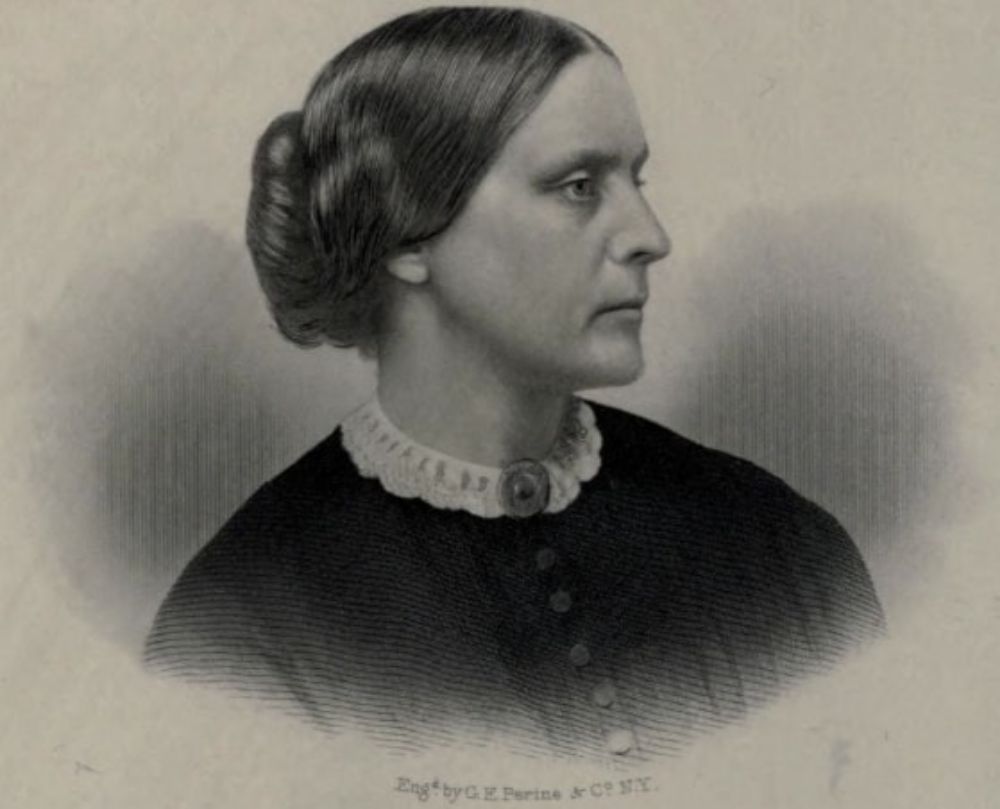In this Article...quick links
Some of history’s most famous orators have motivated their listeners to action using a simple technique: convincing them that they can help solve a problem, because they are part of it.
Susan B. Anthony, one of America’s most celebrated suffragists, used this persuasive technique with great success. By employing the logos and ethos methods, she was able to build powerful arguments against women’s inequality, American slavery, and other causes.
Her strategy of persuasion can be effectively applied in the boardroom, as part of business meetings, sales pitches and other presentations where persuasion is necessary. In this article, we’ll review the oratorical techniques she used in the speech “Is it a Crime for a U.S. Citizen to Vote?” (1873), and what we can learn from them.
Who was Susan B. Anthony?
From her birth in 1820, Susan B. Anthony was embedded in a political world. Her parents were both active Abolitionists (anti-slavery activists), and consequently Anthony grew up in what is described as a “Quaker” household. She herself became involved in the political activities of the family, particularly the Abolitionist and Temperance movements (anti-alcohol). Abolitionist meetings were held at the family farm most Sundays, and Anthony often delivered speeches to the attendees.
Once the Civil War was over and slavery had been abolished, Anthony devoted more of her attention to women’s rights. In 1869 she jointly founded the National Woman Suffrage Association (NWSA) with fellow suffragist, Elizabeth Stanton. During the years she served NSWA she published a weekly journal titled The Revolution, edited three volumes of the History of Woman Suffrage, and regularly spoke on campaign tours across the United States.
Her most famous speech, “Is it a Crime for a U.S. Citizen to Vote?”, was delivered in 1873, when Anthony was arrested and put on trial for voting illegally in the presidential election of 1872. Justice Hunt, the presiding judge, would not allow her to speak in court, so Anthony put her persuasive pen to paper.
Anthony’s words were read aloud to the court by a lawyer, in her presence. Let’s analyse exactly how she used logos and ethos as modes of persuasion in her speech.
1. Logos: Persuasion by Logical Reasoning
“The only question left to be settled, now, is: Are women persons? And I hardly believe any of our opponents will have the hardihood to say they are not.” – Susan B. Anthony
Logos is a technique which utilises facts, statistics and analogies to support arguments as evidence. Anthony’s speeches exhibit logos, as they are structured in a logical sequence of claims, supported with evidence from the most authoritative source on American citizenship: the United States Constitution.
Anthony questions her audience frequently (example cited above), particularly on the nature of women as “citizens” and “persons”. This terminology was used in the language of the Fourteenth and Fifteenth amendments to the United States Constitution, legislation which failed to enfranchise women with the vote. Her speech explicitly tests the meaning of these words to illustrate the legitimacy of her vote.
Her argument rests on four essential facts:
- The preamble of the U.S. Constitution refers to “We, the people of the United States,” and not “…we, the white male citizens, not yet we, the male citizens.”
- There is no clause explicitly declaring that the terms “people” or “persons” are sex-specific.
- If women are persons, then “women are citizens.”
- This means women are “entitled to all the privileges and immunities of the free citizens of the several States.”
Anthony persuasively quotes and interprets the legislation to weave a logical argument, leading to a reasonable conclusion.
2. Ethos: Persuading with Credibility
“It shall be my work this evening to prove to you that in thus voting, I not only committed no crime, but, instead, simply exercised my citizen’s right, guaranteed to me and all United States citizens by the National Constitution, beyond the power of any State to deny.” – Susan B. Anthony
Ethos is an appeal to the ethical reasoning of the audience. With this method Anthony positions herself as being of credible character, in line with the ethics and morals of 19th century America. To do this, she uses three techniques to convince her listeners that she is of a trustworthy ethos, and they should accept the logos in her argument.
Respectful Introduction for an Amiable First Impression
She opens with a respectful greeting: “Friends and Fellow-citizens”. Here Anthony tries to create a good first impression to establish an amiable foundation for the following lines of her introduction. The charges are repeated and she states clearly that her purpose for speaking is to convince the audience of her innocence, and the legitimacy of her vote.
Quotation From Sources to Build Credibility
To add credibility to her case, she often quotes from the Constitution directly. This tells the audience that she is not only informed about her subject matter, but can use indisputable facts from the legislation in an eloquent way.
The ordering of the quotes is significant, as she begins with the National Constitution, before providing additional passages from the Constitution of the State of New York. By moving from the macro to the micro, she crafts a multi-layered argument that has a better chance of convincing the jury she is a credible defendant.
Historical References to Create a Connection
Anthony makes several references to political episodes in American History. She refers to the American Revolutionary War, and the ethos of the founding fathers who drafted the National Constitution at the beginning of American liberty. She concludes:
“Thus, at the very beginning, did the fathers see the necessity of the universal application of the great principle of equal rights to all…”
With the Civil War in recent memory, American liberty was a topic of the time. By referring to the Revolutionary War, she creates a connection between the ethos of the founding fathers on the battlefield, and her own in the courtroom. The result is the image of an informed, respectful and eloquent character, whom the audience would be more likely to support.
How You Can Use Logos and Ethos to Persuade
Despite her passionate speech, Justice Hunt concluded that Anthony’s guilt was self-evident, and the jury was precluded from delivering a verdict. Nonetheless, “Is it a Crime for a U.S. Citizen to Vote?” has become Anthony’s most famous speech. It’s been praised for eloquence of argument, and the persuasive strategy employed to fight against political injustice.
To present persuasively like Susan B. Anthony, structure your presentation around a logical argument, supported by facts, statistics and analogies to employ logos. Leverage the power of ethos by introducing yourself and your credentials confidently at the start of the presentation. Then maintain your credibility by speaking with conviction about your subject, using assertive language and voice tone wherever you can.
With just a few simple techniques everyone has the ability to become a persuasive and inspiring presenter.

Belinda is the Co-Founder and Managing Director of SecondNature International. With a determination to drive a paradigm shift in the delivery of presentation skills training both In-Person and Online, she is a strong advocate of a more personal and sustainable presentation skills training methodology.
Belinda believes that people don’t have to change who they are to be the presenter they want to be. So she developed a coaching approach that harnesses people’s unique personality to build their own authentic presentation style and personal brand.
She has helped to transform the presentation skills of people around the world in an A-Z of organisations including Amazon, BBC, Brother, BT, CocaCola, DHL, EE, ESRI, IpsosMORI, Heineken, MARS Inc., Moody’s, Moonpig, Nationwide, Pfizer, Publicis Groupe, Roche, Savills, Triumph and Walmart – to name just a few.

